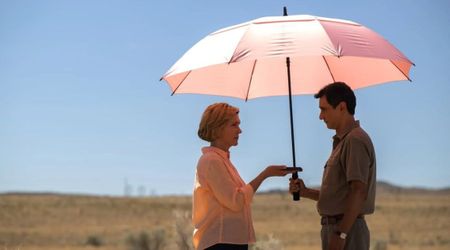Smithsonian's 'Islands of Fire' docu delves into the impact of climate change on a stunning landscape

After delving into the devastation caused by two of the world’s most active volcanoes in 2018 – Fuego in Guatemala and Kilauea in Hawaii – in last week's documentary, the Smithsonian channel explored the islands spread across the Atlantic ocean which range from facing icy-cold temperatures to being covered with molten lava.
In the documentary titled 'Islands Of Fire,' which aired on Sunday, September 15, viewers got to learn about the lesser-known species of animals which inhabit these diverse islands, with some adapting to the natural habitats better than the others. The hour-long wildlife documentary offers a look at the breeding grounds of some of the creatures and how their life cycles are tailor-made for these islands.

“Few places on Earth remain largely untouched and uninhabited by humans, but such spots exist in the middle of the Atlantic Ocean. Welcome to the Mid-Atlantic Ridge, a vast chain of volcanic mountains that have surfaced as tiny, isolated islands thousands of miles from any mainland. These worlds serve as both playgrounds and sanctuaries, where some species struggle and others thrive. Discover the secrets of these little-known oases as we explore eight islands, from the Arctic to the Antarctic,” read a description of the documentary on the Smithsonian channel.
The eight islands handpicked for the documentary are hard to find on a world map and even harder to reach for human beings. As a result, they largely remain unexplored and uninhabited by mankind. The documentary begins with Iceland, which was formed when an underwater volcano erupted, pushing the land up. It is home to arctic foxes and colonies of puffins.

Another part of the mid-Atlantic range explored was Ascension Island, which has a population of 800 and can only be accessed by a boat or military aircraft. It is a rich tropical haven for sea turtles, seabirds and the Ascension frigatebird, which cannot be found anywhere else on the planet and which are known for the red-throated males.

The documentary then goes on to visit the wildlife on the remote islands of Tristan de Cunha, Elephant Island, and the Falklands, which are home to seals, the Yellow-nosed albatrosses, and the Tristan thrush, which changed from a herbivore to a carnivore – exceptional animals thriving on the volcanic lands. However, viewers will get to see how the numbers of most of the animal species explored by the documentary are on a decline, thanks to climate change, pollution and the increasing interference of human beings in their habitats.
Islands of Fire is produced by Carl Hall of Warehouse 51 Productions Ltd. while Joy Galane and David Royle serve as executive producers for Smithsonian Channel.










